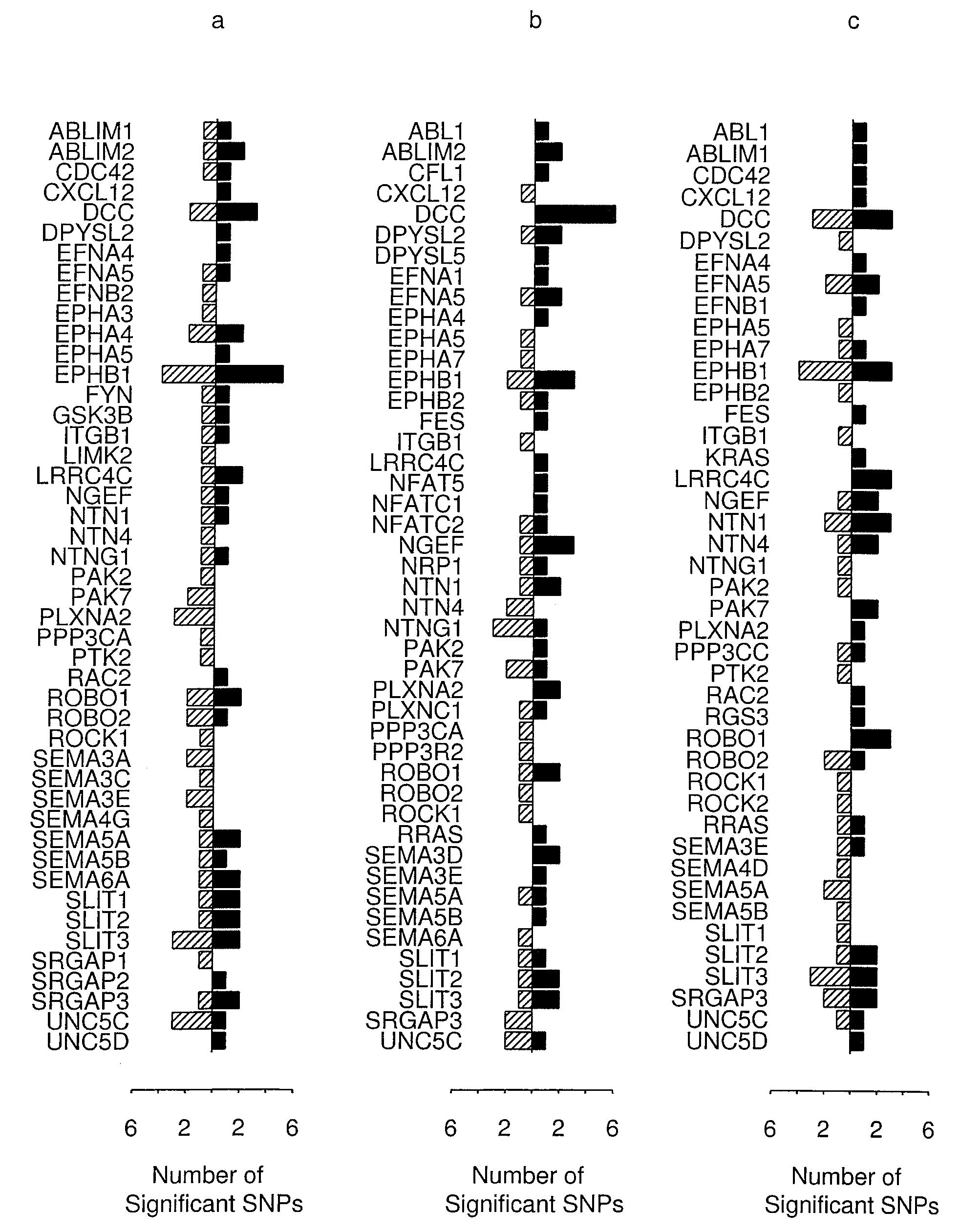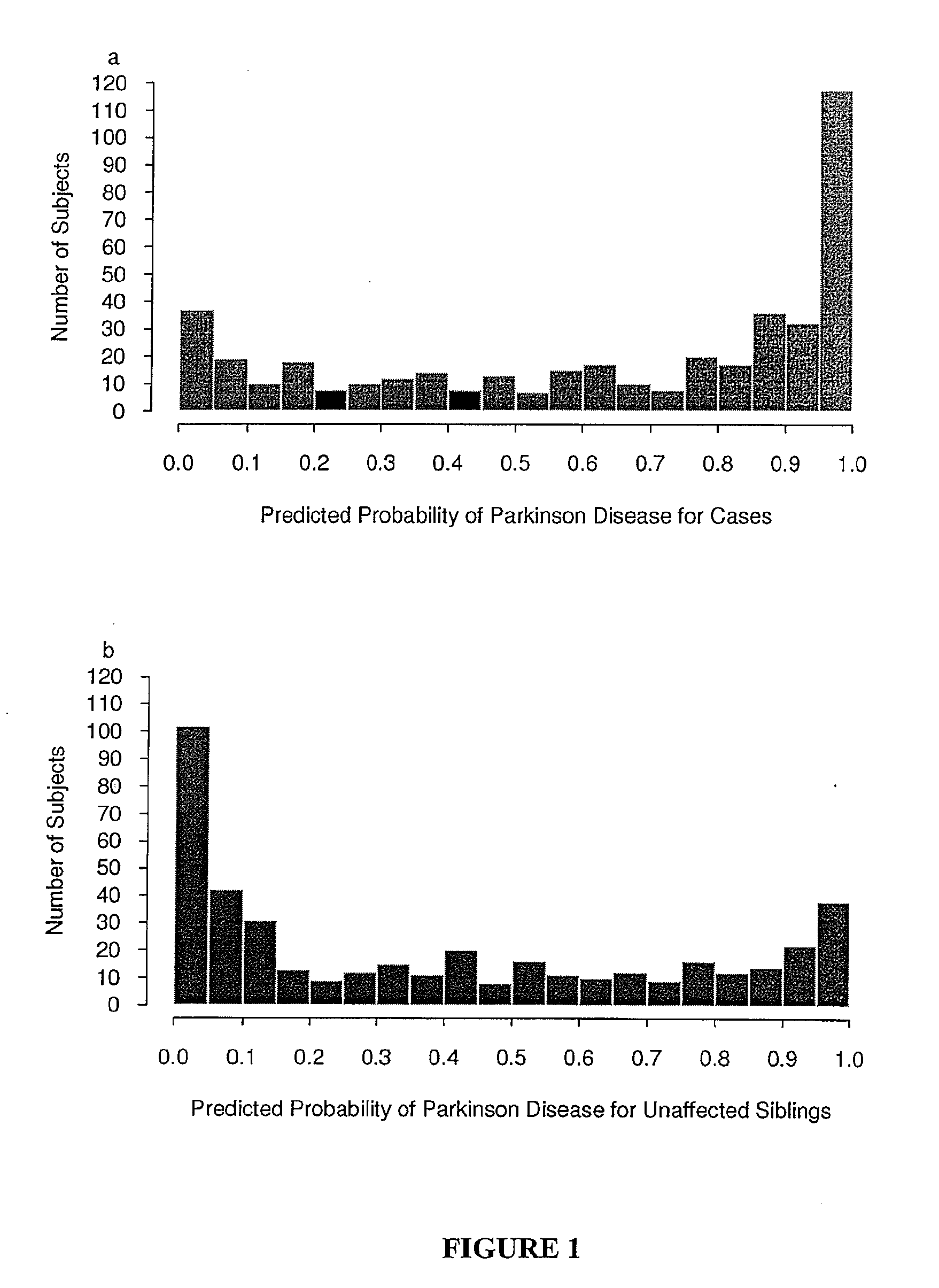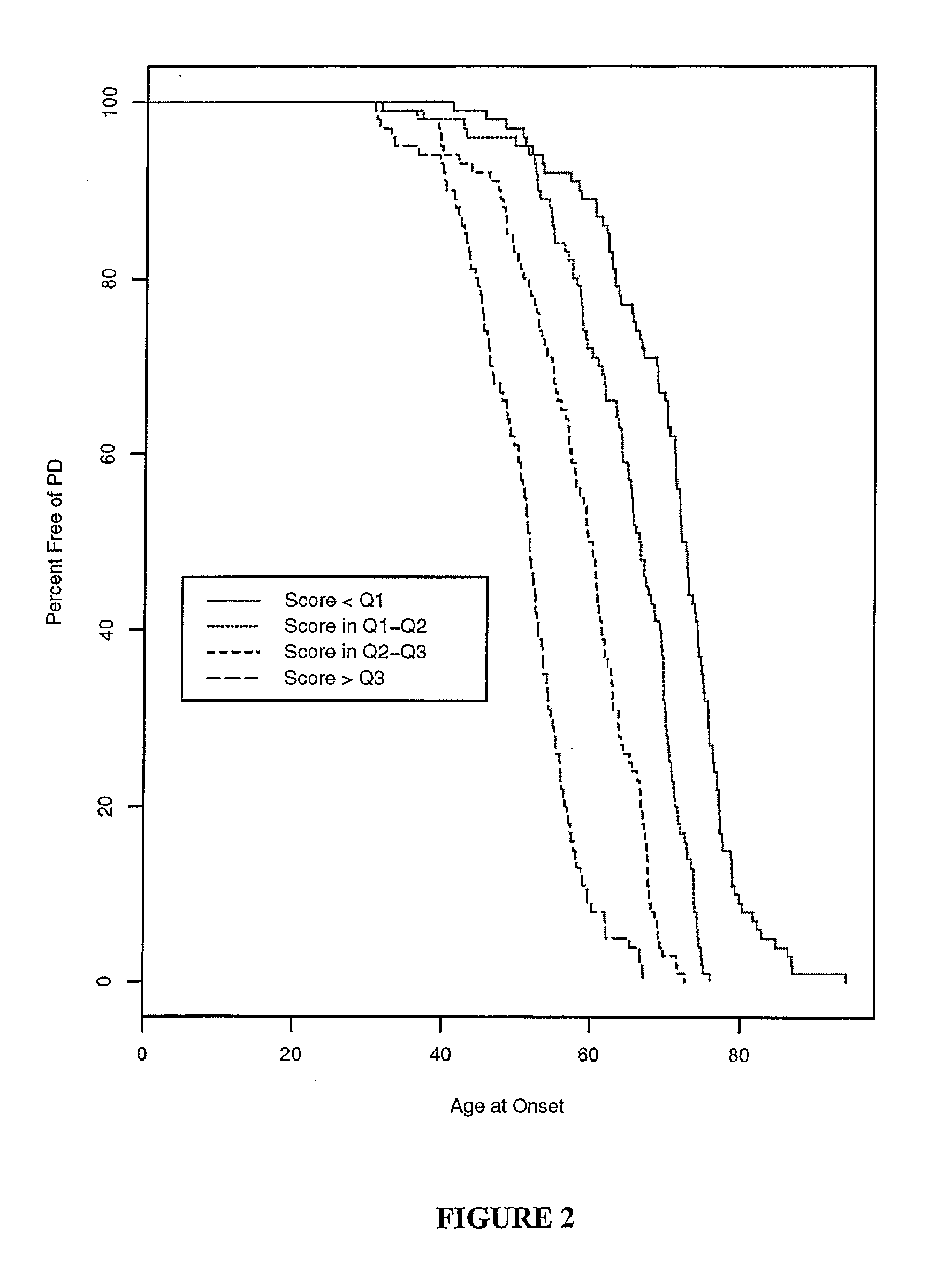Predicting Parkinson's Disease
a technology for parkinson's disease and gene variations, applied in the field of predicting parkinson's disease, can solve the problems of source of disability and death, and little progress in the discovery of gene variations that predispose to complex diseases
- Summary
- Abstract
- Description
- Claims
- Application Information
AI Technical Summary
Benefits of technology
Problems solved by technology
Method used
Image
Examples
example 1
Identifying Sequence Polymorphisms that can Predict Parkinson's Disease
[0045]The following was performed to determine whether or not common variations in genes that encode polypeptides involved in the axon guidance pathway predispose to humans to PD. First, the Kyoto Encyclopedia of Genes and Genomes (KEGG) (Kanehisa, Trends Genet. 13:375 (1997); Kanehisa and Goto, Nucleic Acids Res. 28:27 (2000); and Kanehisa et al., Nucleic Acids Res. 34:D354 (2006)) was consulted. The KEGG pathway database is a bioinformatics resource that provides wiring diagrams of molecular interactions, reactions, and relations. There are several hundred pathways in KEGG related to Homo sapiens and diseases. This includes a detailed summary of the axon guidance pathway (World Wide Web at “genome.jp / dbget-bin / www_bget?path:hsa04360”). All of the genes that encoded polypeptides within the pathway were identified via Entrez Gene (World Wide Web at ncbi.nlm.nih.gov / entrez / query.fcgi?db=Gene). The UniGene database...
example 2
Attempts to Cripple the Axon Guidance Models by Removing SNPs
[0084]An attempted was made to cripple the models by removing SNPs in the reverse order from which they were selected, which should generally remove the single most important SNP first. The results for the first 10 SNPs removed from each model were as set forth in Table 9, 10, and 11.
TABLE 9Susceptibility.Number of Removed SNPsSNPGeneModel P value04.6E−381rs2044041PPP3CA2.4E−332rs4678260MRAS1.8E−293rs6656034PLXNA21.0E−274rs739043RAC23.7E−255rs17641276PAK42.6E−226rs2072952PAK79.2E−217rs10917325EPHB22.4E−198rs6492998CHP9.5E−199rs12740705CDC424.4E−1710rs11185076NTNG12.1E−16
TABLE 10Survival free of PD.Number of Removed SNPsSNPGeneModel P value05.4E−481rs3822787SEMA5A2.2E−462ss46555247NFATC22.0E−443rs6769328ROBO17.9E−424rs17015294ROBO22.2E−365rs6762693SRGAP34.3E−346rs215285SEMA3E6.5E−327rs10008860ABLIM29.3E−328rs13256961UNC5D7.8E−329rs36183EPHB13.0E−3010rs1432899SLIT31.7E−27
TABLE 11Age at PD onsetNumber of Removed SNPsSNPGeneMo...
example 3
Axon Guidance Pathway Genes and ALS
[0086]This study employed a genomic pathway approach to determine whether polymorphism in the axon guidance pathway predisposed to ALS. Specifically, bioinformatic methods were used to mine an available whole-genome association dataset for SNPs that were within brain-expressed, axon guidance pathway genes. Then, statistical methods were used to construct models of axon guidance pathway SNPs that predicted three outcomes: ALS susceptibility, survival free of ALS, and age at onset of ALS. The primary whole-genome association study dataset employed by this study included 275 ALS cases and 269 unrelated controls. The median age at onset of ALS among the cases was 54 years (range 26-87). Details regarding the SNP markers genotyped, including call rates, Hardy-Weinberg equilibrium estimations, and re-genotyping concordance rates are described are described elsewhere (Schymick et al., Lancet Neurol., 6(4):322-8 (2007)). The bioinformatic methods identifie...
PUM
 Login to View More
Login to View More Abstract
Description
Claims
Application Information
 Login to View More
Login to View More - R&D
- Intellectual Property
- Life Sciences
- Materials
- Tech Scout
- Unparalleled Data Quality
- Higher Quality Content
- 60% Fewer Hallucinations
Browse by: Latest US Patents, China's latest patents, Technical Efficacy Thesaurus, Application Domain, Technology Topic, Popular Technical Reports.
© 2025 PatSnap. All rights reserved.Legal|Privacy policy|Modern Slavery Act Transparency Statement|Sitemap|About US| Contact US: help@patsnap.com



